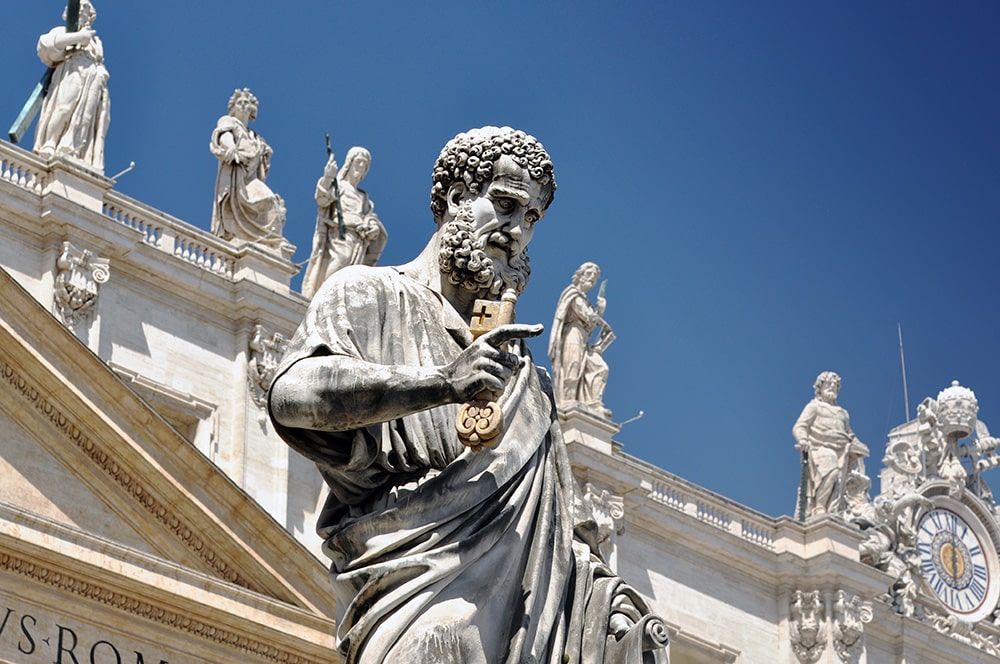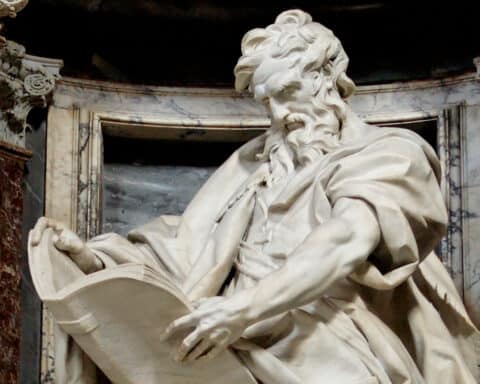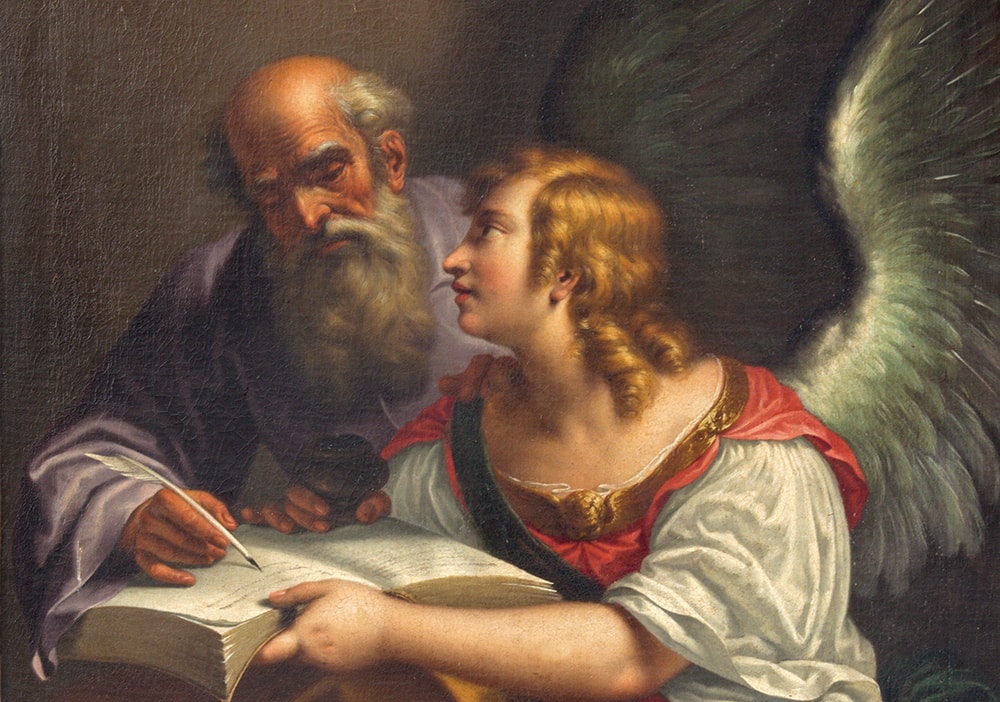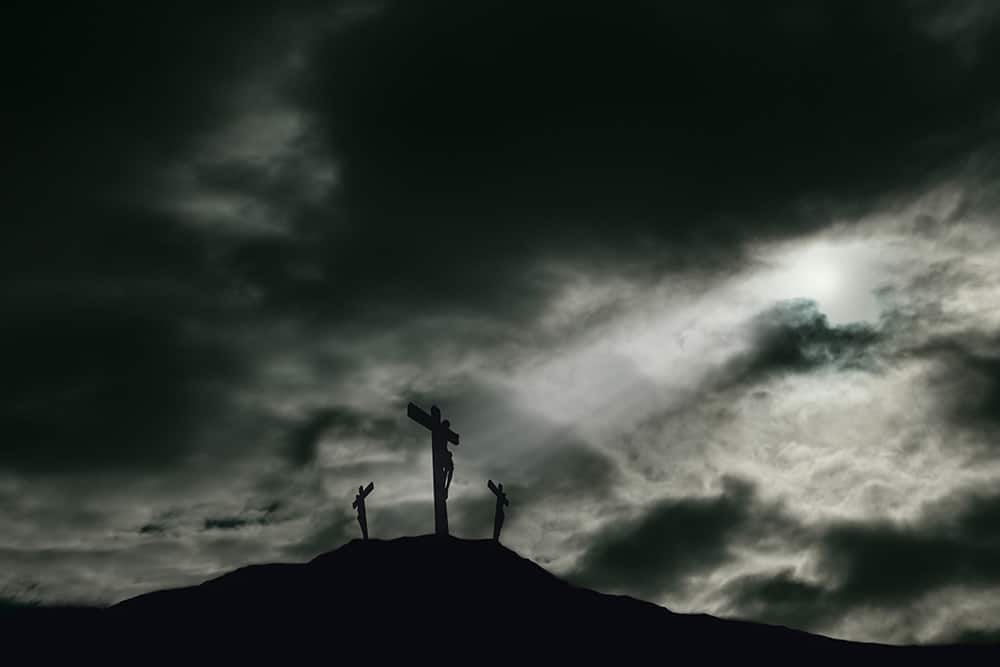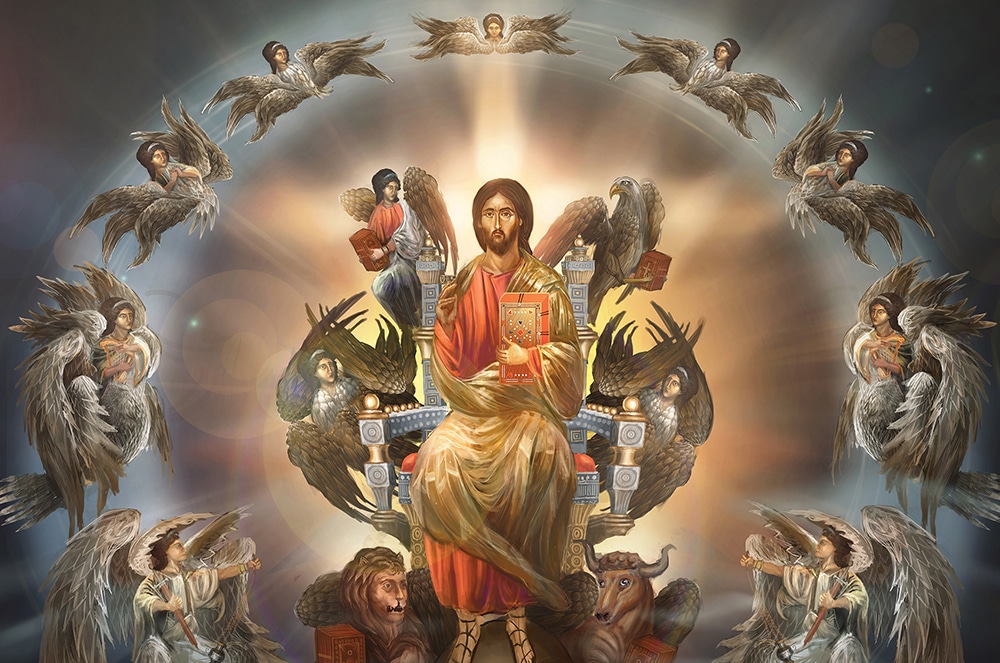This is the 11th in a 12-part series of In Focuses dedicated to exploring some central themes and texts in the Gospel of Matthew.
In the dome of St. Peter’s Basilica we read the words Tu es Petrus et super hanc petram aedificabo ecclesiam meam et tibi dabo claves regni caelorum, “You are Peter, and upon this rock I will build my church … I give you the keys to the kingdom of heaven” (Mt 16:18-19). Catholics have rightly understood these words of Jesus as an indication of Peter’s unique role among the disciples and in the life of the Christian community. And while only the Tradition succeeds in revealing the fullness of that role, there is still much to be learned from these brief few words in the Gospel of Matthew.
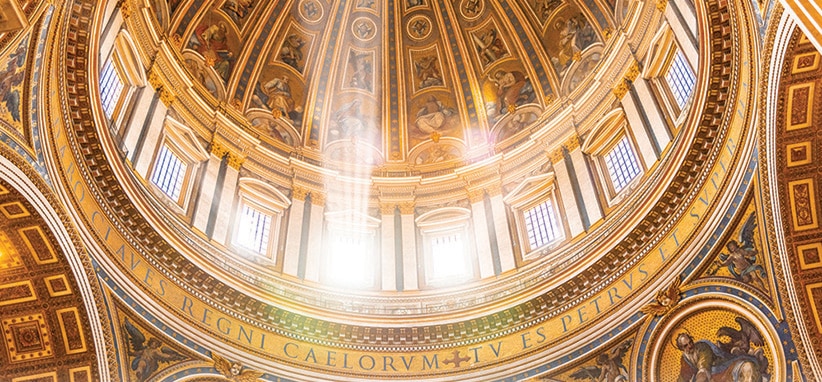
It helps to remember that the corporate nature of following Jesus is made especially clear in Matthew. The followers of Jesus constitute a new community with a distinct character and structure.
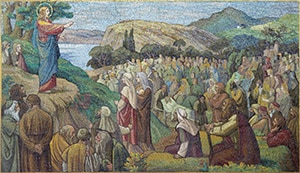
Already in the Sermon on the Mount, for instance, Jesus offers his disciples a particular code of living and manner of prayer — the Our Father. He will do so again at the end of his life with the institution of the Last Supper (cf. Mt 26:26-28) and the commissioning of the disciples to announce the Gospel and baptize (28:16-20). What is more, this new form of faith sets itself in distinction to other forms of Jewish fidelity: “You have heard that it was said to your ancestors … but I say to you …” (Mt 5:21-22).
We can see much the same point as we remember that Jesus calls those who believe in him “little ones” (Mt 18:6, 10, 14). The repentance for which he asks requires a new beginning, and those who wish to follow Jesus must “turn and become like children” (Mt 18:3). For his disciples, this means entering a new family, and it brings about a new form of belonging. The “little ones” of the kingdom are not orphans. They belong to Jesus, and their allegiance is owed to him alone (cf. Mt 10:37) — an allegiance worked out in love of him and in love of one another. The little ones must not cause one another to sin (18:6-9), must seek out those who are lost (18:10-14), admonish the brother who sins (18:15-20), and forgive as they themselves have been forgiven (18:21-35).
| QUESTIONS TO CONSIDER |
|---|
|
In the following passage — one of the two in Matthew that mentions “the church” — Jesus explains what this task of admonishment and reconciliation means in practice.
“If your brother sins [against you], go and tell him his fault between you and him alone. If he listens to you, you have won over your brother. If he does not listen, take one or two others along with you, so that ‘every fact may be established on the testimony of two or three witnesses.’ If he refuses to listen to them, tell the church. If he refuses to listen even to the church, then treat him as you would a Gentile or a tax collector. Amen, I say to you, whatever you bind on earth shall be bound in heaven, and whatever you loose on earth shall be loosed in heaven” (Mt 18:15-18).
We see in this passage that those who belong to Christ cannot exist in isolation. As Dorothy Day once wrote: “We cannot live alone. We cannot go to heaven alone. Otherwise, as Péguy said, God will say to us, ‘Where are the others?'” The sin of the brother in Matthew 18 — whether it be “against you,” as some manuscripts have it, or just in general — is a matter of communal concern. “If [one] part suffers, all the parts suffer with it” (1 Cor 12:26). The matter of reconciliation pertains “to the Church,” to the body of the faithful to whom Christ has given authority to bind and to loose. Without being reconciled to one another in the body of the Church, it seems one cannot remain in the community of those who follow Jesus. In 251, St. Cyprian would make much the same point in his remark that “No one can have God for his Father who has not the Church for his mother.”
Understanding ‘the church’
But what is this “church” we hear spoken of in Matthew 18? The word is ekklesia in Greek, and it is much the same as the title that the group at Qumran on the Dead Sea used for themselves — qhl. Both simply mean “assembly.” At the very least, it refers here to the local community, to the body of those to whom one might, as commanded in Matthew 18:17, make a report concerning a brother hardened in sin. And as a group with a distinct identity and praxis, it also distinguishes itself from other Jewish communities whom Matthew refers to with the phrase “their synagogues” (Mt 4:23).
If we turn to Matthew 16, the only other passage in this or any Gospel where we find the word “church,” we can say even more. After Simon Peter’s confession, “You are the Messiah, the Son of the living God” (Mt 16:16), Jesus blesses Peter with these words: “Blessed are you, Simon son of Jonah. For flesh and blood has not revealed this to you, but my heavenly Father. And so I say to you, you are Peter, and upon this rock I will build my church, and the gates of the netherworld shall not prevail against it. I will give you the keys to the kingdom of heaven. Whatever you bind on earth shall be bound in heaven; and whatever you loose on earth shall be loosed in heaven” (Mt 16:17-19).
The first thing we notice is that whereas “the church” in Matthew 18 refers only to the local community, here the word has a much broader reach. The “church” that Jesus promises to build on Peter stands in for all of those whom he gathers to himself. Of this one reality, churches like that mentioned in Matthew 18 are simply part and participant.
Peter as ‘the rock’
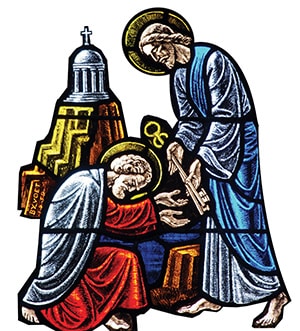
Jesus’ gift of a new name to “Simon son of Jonah” tells us even more. Some wish to see the name as a reference to Peter’s “rocky” character, but this makes little sense in context. Jesus’ words follow and reward Peter’s confession. The truthfulness of what has been revealed to Peter and of what he grasps and expresses leads to his being given a new name and a new role: Petros. The name is, of course, the Greek word for “rock.” (The same is true of the Aramaic Cephas we find used of Peter in texts like John 1:42 or 1 Cor 1:12.) Peter is himself the foundation on which Christ “will build (his) church.”
The backdrop for these words in Caesarea Philippi adds to our understanding. Located north of the Sea of Galilee, the town featured several temples in Christ’s day, some of which were built into an exposed rock face. Just as that rock supported structures like the Temple of Pan (with its cadre of dancing goats!), so Peter would support the edifice Jesus willed to build. Here, however, it is a question not of physical integrity but of preserving the truth of the Gospel, of preserving all that the “gates of hell” would wish to destroy.
The Catechism of the Catholic Church summarizes this idea by saying that “Christ, the ‘living stone’ (1 Pt 2:4) thus assures his Church, built on Peter, of victory over the powers of death. Because of the faith he confessed Peter will remain the unshakeable rock of the Church. His mission will be to keep this faith from every lapse and to strengthen his brothers in it (cf. Lk 22:32)” (No. 552). In this way, Peter, the unshakeable rock, plays a similar function to the edifice built by the first “son of David” — King Solomon’s Temple. Catholic scholar Curtis Mitch explains that in rabbinic tradition “the foundation stone … of the Jerusalem Temple capped off and sealed a long shaft leading down to the netherworld (Rev 9:1-2; 20:1-3). The Temple, resting securely on a rock, was thus the center of the cosmos, the junction between heaven and Hades. Drawing from this background, Jesus guarantees that the powers of death and deception will not overcome the Church — i.e., the new Temple built on Peter. He enables Peter (and his successors) to hold error at bay and faithfully proclaim the Gospel.”
The foundation of the Church
Peter’s faith, exemplified in his confession of Jesus as the Messiah, is the truth which the “gates of hell” cannot destroy. On the eve of his passion, in the hours before his betrayal, Jesus says to St. Peter, “Simon, Simon, listen! Satan has demanded to sift all of you like wheat, but I have prayed that your own faith may not fail; and once you have turned back, you must strengthen your brothers” (Lk 22:31-32). What the Lord guarantees is not Peter’s inability to fail. Jesus knows well that Peter will deny him three times before the cock crows, and he knows that Peter will then “turn back.” Jesus promises, rather, that Peter’s “faith may not fail,” and that once he has “turned back” that Peter be able to “strengthen [his] brothers.” This task does not depend on Peter’s upright character — great saint though he goes on to become — but on the exercise of the role given to him by Christ.
The charism of “binding and loosing” that belongs in some sense to all of the faithful belongs especially to Peter as the one to whom is given “the keys to the kingdom of heaven” (Mt 16:19). The image that Jesus uses in this passage calls to mind the prophecy of Isaiah. In chapter 22 of that book, the Lord promises an unfortunate man named Shebna that his authority in the kingdom will soon be handed over to another: “On that day I will summon my servant Eliakim, son of Hilkiah; I will clothe him with your robe, gird him with your sash, confer on him your authority. He shall be a father to the inhabitants of Jerusalem, and to the house of Judah. I will place the key of the House of David on his shoulder; what he opens, no one will shut, what he shuts, no one will open” (Is 22:20-22).
| KEY LESSONS |
|---|
|
The one who possesses the keys of the house of David owns the authority to act in the place of the king. The one who is given “the keys to the kingdom of heaven” is given authority to act in place of the King of Kings. He is made, in other words, the vicar of Christ. And like the Lord, his authority is one exercised not by force but in service. Peter, is the Servus Servorum Dei, the servant of the servant of God, the one whose task it is to strengthen the brethren by “binding and loosing,” by teaching and admonishing so that their faith, like his, will not fail.
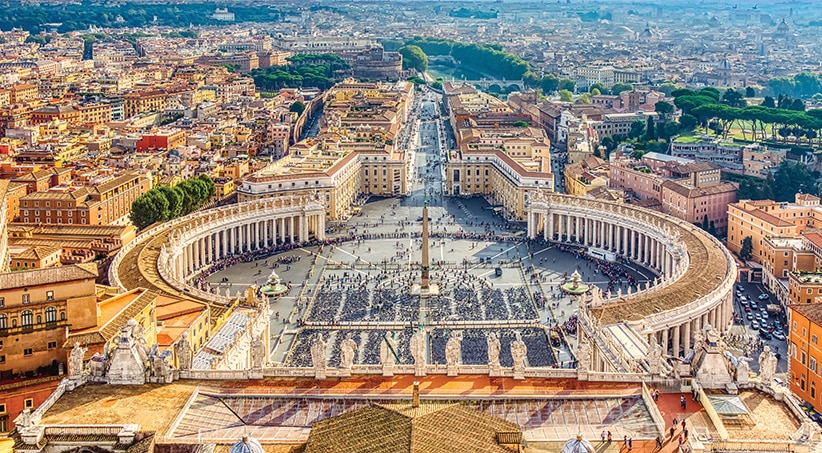
Below the high altar of St. Peter’s Basilica, encased by generations of monuments that reach back through 20 centuries, rests a portion of St. Peter’s remains. The tomb now looks nothing like it did to those who first buried Peter in the ground of the Vatican hill. And yet, those layers of marble purify our memory; they do not obscure it. They make it possible to see and understand just who it is that was first buried in a tomb like any other. This is Peter, the rock on which the Church is built (cf. Mt 16:18-19), the one given the grace to strengthen his brethren (Lk 22:31-32), and the one tasked with feeding Christ’s sheep (Jn 21:15-17).
Peter himself could not have known the full shape and character that his office would assume in the growth of sacred Tradition. Even so, in the words of Our Lord to St. Peter, we learn clearly the unchanging substance of his ministry. “I will place the key of the House of David on his shoulder; what he opens, no one will shut, what he shuts, no one will open.”
Anthony Pagliarini is an assistant teaching professor and director of undergraduate studies in the Department of Theology at the University of Notre Dame.
| NEXT MONTH |
|---|
| “St. Matthew’s Passion” — The passion of Jesus, beginning with Last Supper, is of course a singular historical event, but its various presentations in the Gospels adopt different points of emphasis. In our last column, we will explore the particular contribution of St. Matthew. |

